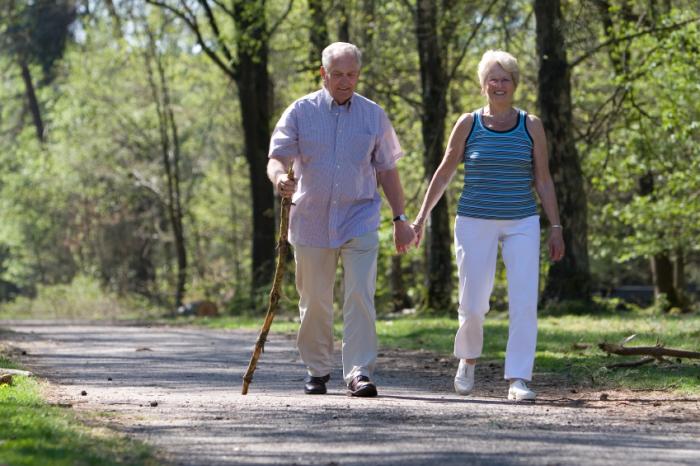
Seniors who run regularly have "a lower metabolic cost of walking" than older, sedentary adults and seniors who regularly walk for exercise.
It's been known for a long time that as people age their maximum aerobic capacity, or 'horsepower,' declines, and that is true for runners as well.
What's new here is that the researchers found that old runners maintain their fuel economy.
The researchers recruited 15 men and 15 women with an average age of 69 who regularly ran or walked for exercise.
For this study, "regularly" meant walking or running at least three times a week for a minimum of 30 minutes per workout, for at least 6 months.
After undergoing preliminary health screenings at the University of Colorado Boulder (CU-Boulder) Clinical and Translational Research Center, the subjects were required to walk on a force-measuring treadmill.
The participants' oxygen consumption and carbon dioxide production were measured while they used the treadmill across three speeds - 1.6 mph, 2.8 mph and 3.9 mph. Additional data for the study came from Prof. Ortega's dissertation on energy expended during treadmill tests by sedentary adults of a variety of ages.
Seniors who run for exercise are better at walking than those who walk for exercise
The team found that older adults who regularly participate in highly aerobic activities such as running have "a lower metabolic cost of walking" than older, sedentary adults and seniors who regularly walk for exercise.
The researchers explain that it was surprising to find that older adults who regularly run for exercise are better walkers than older adults who regularly walk for exercise.
The take-home message of the study, the authors say, is that constantly running for exercise "slows down the aging process," allowing older people to move more easily and improving their quality of life.
"Walking for exercise has many positive health effects, like fending off heart disease, diabetes, weight gain and depression - it's just that walking efficiency does not seem to be one of them.Because we found no external biomechanical differences between the older walkers and runners, we suspect the higher efficiency of senior runners is coming from their muscle cells."
Next, the team will investigate a hypothesis that the "powerhouses" inside individual cells - mitochondria - are implicated in this enhanced walking ability. People who work out regularly tend to have more mitochondria in their cells, in order to provide the energy necessary for powering larger muscles.
Back in July, another team of researchers reported on a study published in the Journal of the American College of Cardiology, which found that running at a slow speed for just 5-10 minutes a day can significantly increase life expectancy.
It is clear that while running is good for health, "more may not be better. You don't have to think it's a big challenge. We found that even 10 minutes per day is good enough. You don't need to do a lot to get the benefits from running."
References:
1. Running for exercise mitigates age-related deterioration of walking economy, Justus D. Ortega, PLOS ONE, DOI: 10.1371/journal.pone.0113471, published 20 November 2014.
2. Additional source: University of Colorado Boulder news release, accessed 21 November 2014.
No comments:
Post a Comment